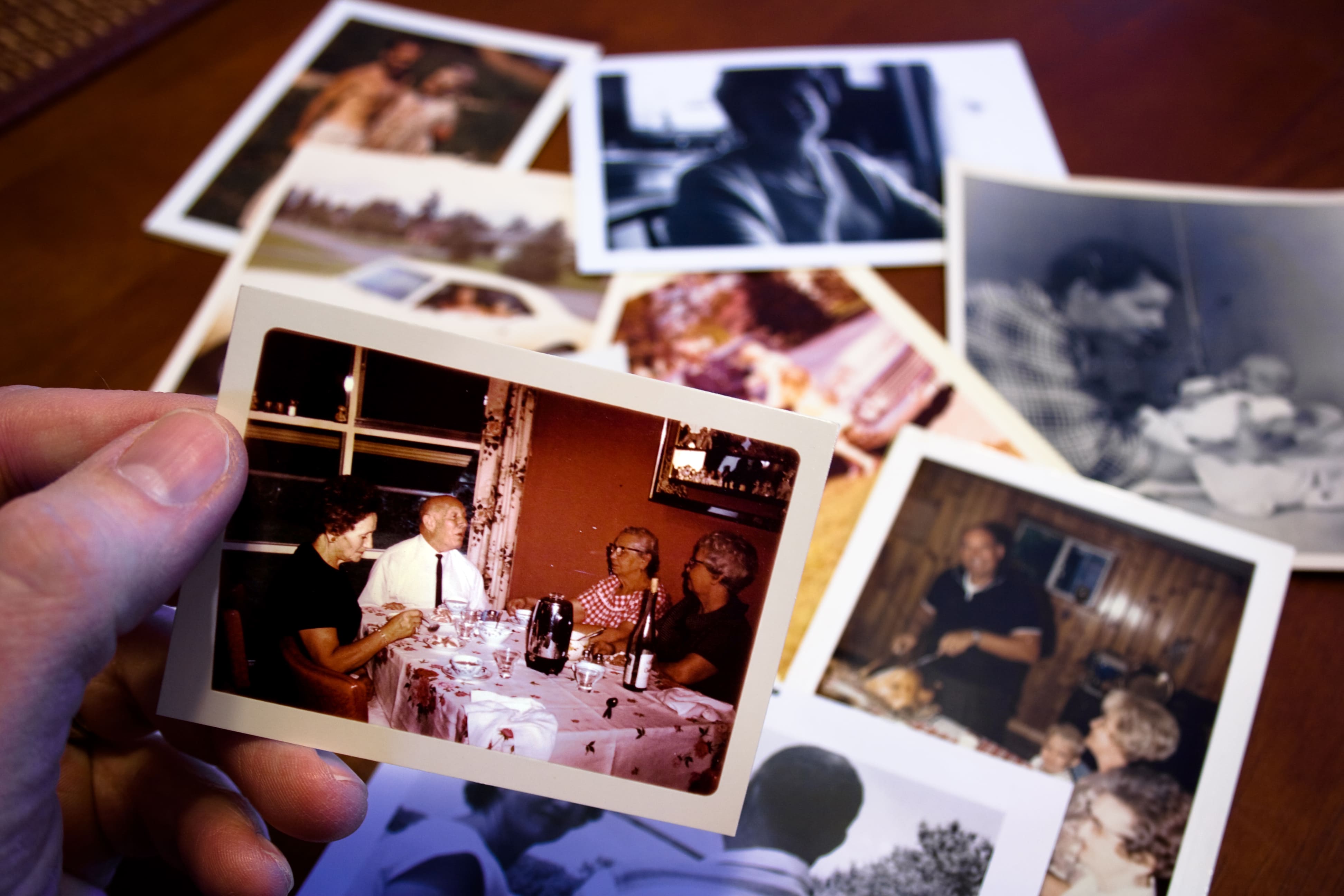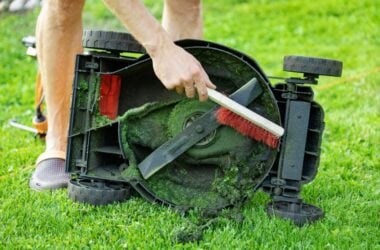Photographs can be some of the most precious possessions in a home. But when they aren’t on display, what are the best ways to store photos? Photos require proper handling if you want them to maintain their quality. In this guide about how to store photographs, we’ll go over a few ways stored photos, some common mistakes that are made in the process of photo storage, and basic preventative measures to help you keep your photos safe.
Prepare for Long-Term Photo Storage
You’ve heard the saying, “out of sight, out of mind.” Even if you think that you’ll be dealing with your photographs again sooner than later, it is better to treat them as though they will be in storage for a long time. In the business of life, we often set projects aside longer than we originally intended, so store your photographs well! Knowing how to store photographs so they’re safe for months and years is the safest option.
Incorporate these tips as you store your photographs safely:
Protect Your Photos from Fingerprints
Try to refrain from touching the front surface of your photos with your fingers. The oil on our skin can cause noticeable marks when it remains on photo for a lengthy amount of time. Always wash and thoroughly dry your hands before working with photographs, and hold them by the edges only.
Label Your Photographs!
Part of the preparation for long-term storage is correctly labeling each photograph. Even if you think you’ll never forget the date and circumstances of the picture, don’t be surprised if you do indeed forget! Also, take into account the future generations who will not have experienced the moment themselves. They’ll want to know the names of the faces and when the picture was taken.
How can you label photographs without damaging them?
If you are housing the photos in an album with room for notes, be sure to neatly write any pertinent information next to each picture. If it is necessary to write on the back of the photographs, avoid using a regular ballpoint pen. It can cause indentations and smears. Archival grade pens are easy to find, and they will result in more stable documentation.
Also, label your tubs and boxes for easy identification once they’re on a shelf. Part of knowing how to store photographs is knowing how to store the containers. While this step is optional, you may appreciate it down the road. If you sort and label boxes of your photographs now, then you can find them later with descriptive labels that say, “Photos 1994-2001”, or “Yellowstone Vacation 2013.”
If more labeling helps you stay organized and aware of your photos, go for it!
How to Store Photographs in the Right Materials
The best way to store photos is with proper materials that protect them and leave minimal residue. Those materials can include:
- Cardboard boxes
- Wooden boxes
- Paper envelopes
- Plastic sleeves
- Photo albums
- Glue
- Tape
However, it is important to note that some of the most common methods of attaching photos to albums or posters can cause discoloration and damage over time. If you plan to store your photographs for a long time, remove any tape from the back — it will turn yellow and brittle over time. Also, refrain from using glues, paper clips, and rubber bands.
It’s easy to toss photos in an envelope or attach them to decorative scrapbook paper. But did you know that not all paper is suitable for photographs? For best results, only use archival grade paper since it is acid-free and safe for long-term storage.
What’s the best material to store your photographs in?
One of the best materials to use for photo protection and safe storage is transparent plastic sleeves. Make sure that the sleeves do not contain PVC or PVA plastics, however. These are unstable and release strong-smelling odors. Better choices are acrylic, polyethylene, or polypropylene plastics.
Protect Your Photographs from Light
Exposure to light will fade photographs over time. In fact, any amounts of sunlight and even fluorescent light can negatively affect the quality of the pigment on your photographs. So store them in a dark place whenever possible. If you’re using transparent plastic tubs to house your stash of photos, cover them to keep out the light.
Protect Your Photos from Moisture and Humidity
A big temptation for people who are trying to declutter their homes is to quickly throw their photos in a box and set it on a shelf in the basement, garage, or the attic. While this may help in the decluttering process, it will not help to preserve your pictures. Instead, it may result in permanent damage.
Why are boxes not enough protection for long-term photo storage?
Basements tend to be very humid. This type of environment encourages mold and mildew, which can permanently discolor or destroy photographs. Also, in the unfortunate event of basement flooding, anything sitting on the floor can be saturated in water. We recommend you keep valuables up on a shelf to avoid this possible danger.
Believe it or not, attics can get pretty humid, too! Depending on what climate you live in, humidity levels get extremely high. Unless your attic is climate controlled, you can expect it to reflect the humidity outdoors. The same is true with typical garages.
What’s the safest humidity level for photo storage?
You should keep your photos in a secure area that maintains a humidity level somewhere between 15% and 65%.
What Is the Best Storage Temperature for Photographs?
When storing photos, you’ll want to keep the temperature below 75 degrees F. This slows deterioration. It slows other activity, too — the kind with little crawling legs and antennae. As long as the humidity is low, the cooler, the better!
Seal Your Photos Away from Rodents and Insects
Mice love to use paper for their nests, and cardboard boxes in the garage or attic make the perfect spot for a cozy mouse home. Unfortunately, your photos will not fare too well in that environment. Chewed up edges and stains from excrement will render your pictures disgusting, if not completely ruined.
Insects aren’t much better. There is one insect — known as a silverfish — that enjoys chewing on photographs. This small wingless bug can cause a lot of trouble. The best way to prevent them from moving in is by depriving them of the opportunity to eat your photographs in the first place. Once you know how to store photographs so they’re safe from pests, they’re going to last much longer.
To prevent unwanted snacking by bugs and rodents, always use a durable and airtight container. Practice common sense when placing the photographs in your box for storage: lay them flat to prevent bending and tearing, and make sure the lid is secure when you’re done.
How to Store Old Photos
Any of the advice given thus far should be taken extra seriously when you’re considering how to store photographs from decades ago.
Why does storing old photos need special care?
Old photographs are more susceptible to fading, cracking, mildew, and more. Not only are they more fragile, but they are also often more valuable, as well. In fact, many old photographs are the only copy in existence. If they’re damaged or destroyed, it’s not as simple as printing off another copy from your phone or computer. Putting old photographs into storage may be the best choice for their longevity because of the damage they may suffer from long-term light exposure.
4 Tips About How to Preserve Old Photos
- For the best results, put on a pair of clean cotton gloves before handling your old photos. This stops fingerprints and oils from your skin from getting on the surface of the photo paper.
- In addition to using acid-free paper or non-PVC/PVA plastic, make sure to lay your old photographs flat. Place them in a sturdy container that will prevent them from getting bent. Aged paper is far more brittle than its newer equivalent.
- Just like any other photos, store them in a cool, climate-controlled location. Keep them safe from insects and rodents.
- One of the best things you can do to preserve your old photos and enjoy them at the same time is to make high-quality photocopies of the originals for display purposes. Then you can carefully pack the originals away for safe storage. You can do this yourself if you have the right equipment. Alternatively, you can have it done professionally. It’s better to be safe than sorry; if there are any photos that are especially important to you and you only have one copy, make another.
Storing Pictures for Future Generations
It’s not at all difficult to successfully store your photos. It just takes some knowledge and little extra effort to learn how to store photographs properly. Remember that you are preserving family memories and creating a legacy for years to come.








